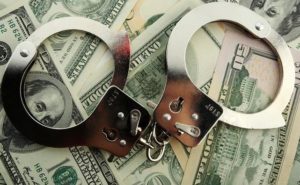 How often have you thought to yourself, I do not feel safe in this town? You know the one. Rundown, abandoned buildings, ladies of the night walking around, etc. The “low end” district where poverty is the norm and not the exception. We often tend to look at places like this and think it must have a high crime rate. However, if you look at it from a statistical side, you may see that it is not always the case.
How often have you thought to yourself, I do not feel safe in this town? You know the one. Rundown, abandoned buildings, ladies of the night walking around, etc. The “low end” district where poverty is the norm and not the exception. We often tend to look at places like this and think it must have a high crime rate. However, if you look at it from a statistical side, you may see that it is not always the case.
Statistically Speaking
During the depression, there were some bad guys out there robbing others, but for the most part, everyone got along well enough. Then you look at the 1950s when the economy was improving and you will notice a drastic increase in the crime rate.
The same is true for big city areas that are known for being “drug” hotspots”. Drugs make easy money as long as you avoid getting caught, but in those areas, the economy is still very low. Crime rates rise and fall, though the city’s circumstances do not really change that much. One reason it may change is that the inner city, young adult male population rises or lowers. You also have to look at the fact that jails are filled, police forces are growing stronger, and everyone is saying, “no” to crime more often because they do not want the penalties of not obeying the law.
What It Means for Us
The truth is, we cannot blame the high crime rates on anything specific. It is a combination of several different factors that change from one year to the next. In order to lower crime, we cannot give more money, take away money, or anything else. We may simply have to focus on adding more protection to innocents, more jails, more police, and stronger penalties. Perhaps one day we will figure out how to battle crime.